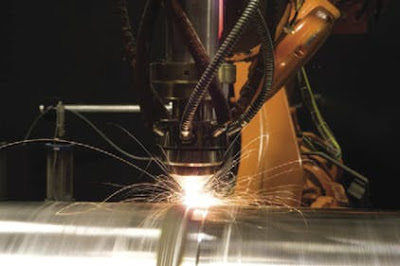The laser cladding system market primarily serves big, medium, and small enterprises for applications such as increasing surface metal properties by coating them with performance coating. This method use a high-intensity laser to melt a small portion of the metal surface, which is subsequently fed with the appropriate powder. This method is scanned across the required surface to generate a homogeneous material coating. Due to its great performance, it also finds important usage in weld repair applications such as Plasma Transfer Arc (PTA) welding and Tungsten Inert Gas (TIG), among others.
Laser cladding uses laser energy as a heat source to melt and weld a material that has different and beneficial metallurgical properties onto a component with the lowest chemical dilution possible for a welding process. This allows one to cost-effectively customize the surface properties of the less expensive substrate to provide greater resistance to corrosion, oxidation, wear and high-temperature fatigue strength. The direct diode laser cladding system market has the ability to weld a very thin and smooth single pass layer of metal onto another metal substrate at high deposition rates, with little or no dilution.
Additive manufacturing, commonly known as 3D printing, is the phrase used to describe the process of using 3D design digital data to manufacture a tool or piece of equipment by depositing layers of materials. Because of their high product efficiency and minimum design flaws, as well as greater cost savings, 3D printing technologies have gained traction in end-use industries such as automotive, aerospace, healthcare implants, and equipment manufacture. Stereolithography (SLA) and selective laser sintering (SLS) are increasingly being used in the process, which is projected to fuel the growth of the laser cladding system market.



No comments:
Post a Comment